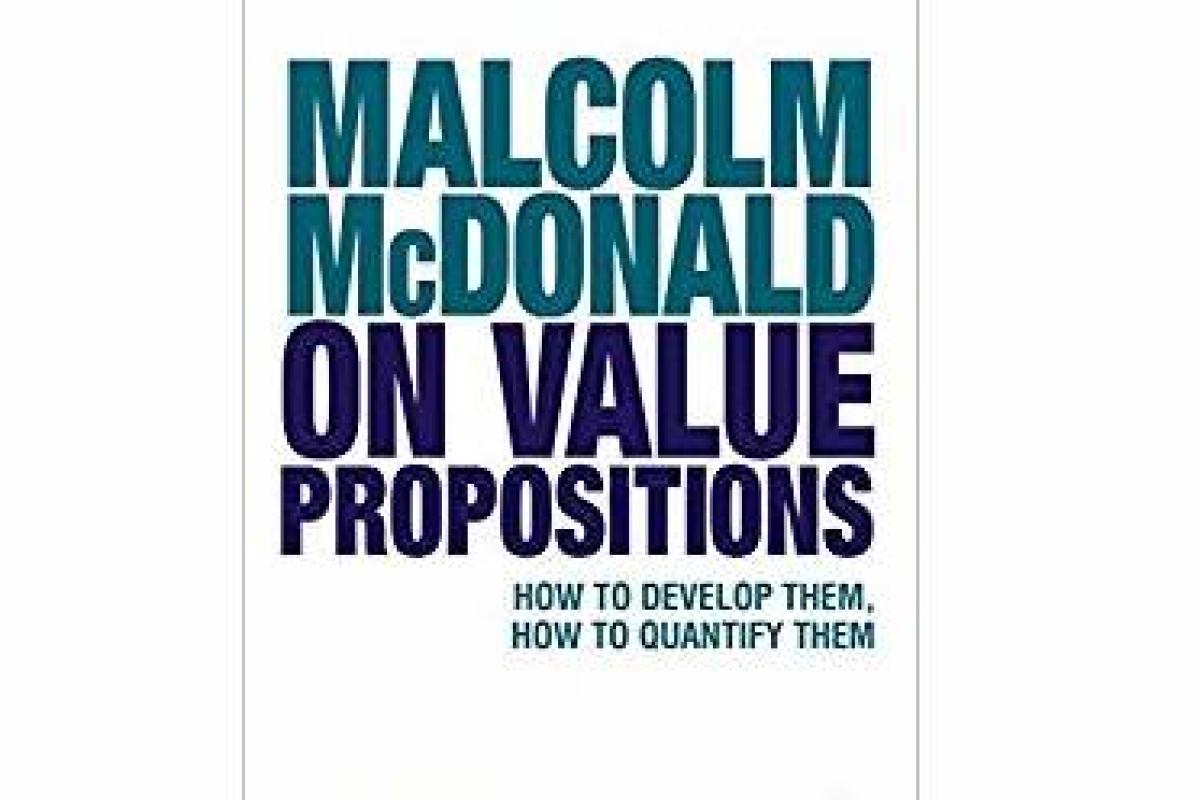USPs - unique selling propositions - are useless selling propositions if what is unique has no value to the customers.
According to research by McKinsey and quoted in the book only 5% of companies have financially quantified value propositions. Given their power in helping secure sales and win business, especially in a B2B context, this number is frankly a bit damning of the marketing profession.
This new book by Malcom McDonald and Grant Oliver sets out to help redress the situation by providing a structure approach to developing them. The authors argue that the process centres around two deceptively simple questions:
1. What are your key target markets, in order of priority?
2. In each, what are your organisations sources of differential advantage?
What I liked about even the questions were not only their clarity but that their exact wording highlighted that the authors recognise the need for modern businesses to acknowledge and identify multiple target groups and their different needs. This means that there will need to be different answers and not the classic over-arching single-minded proposition so beloved of many old marketing textbooks. This acceptance of managing multiplicity fits with my own experience and beliefs.
The authors then proceed to set out their six-step process to help you answer those two initial questions:
- Define Target market
- Identify buyers
- Added value analysis
- Categorize
- Financial quantification
- Communication to target customers/segments
It is a well-researched, very thorough and very rigorous process, a fact they acknowledge when they say, “We know that we have taken you through a long, and on occasions, complicated journey but please believe us when we say that it will be worth all the effort”.
Each stage is clearly explained, and suggested tables and formats are provided so the textbook doubles up as a workbook.
The rewards of the effort are demonstrated by some very powerful case studies at the end of the book. Two in particular – The MAN trucks case and the SKF case – were compelling and well written by Des Evans and Todd Snelgrove respectively.
Indeed, it is perhaps Snelgrove who makes the best and simplest case for financially quantified value propositions in the book. He compares two potential approaches for that a hypothetical new product or service. In the first instance he imagines telling a customer it will allow them to do the job 22% faster and the quality will be 10% better. They suggest that the direct customer might understand but that the proposition might not be as strong with the procurement or the finance director. In scenario two they imagine the same first part of the pitch but now taking it a stage further and presenting a customised business case based on industry (or even better company specific) averages which shows an annual saving of $225,000 in overtime, spare parts and reduced scrap.
If I have any criticisms of the book it is that I would have preferred to have read at least one of the case studies up front to demonstrate the value of working your way through the “whole long, and on occasions, complicated journey”.
Furthermore, while the authors do stress the importance of emotional engagement and indeed devote a chapter to it, it plays little or no part in subsequent ones. This would perhaps be most obvious in developing the exact phrasing of the propositions which is something that is not covered in the book as the chapter on communicating the proposition focuses on the media and means of communication not the content.
Having said that I think I can confidently predict that the value the book will add to your business is likely to more than the £19.99 it will cost you – but without a bit more knowledge of your market I can’t say whether it will be in the region of the £550m it helped add to MAN’s UK business.
By Giles Lury, Director, The Value Engineers



